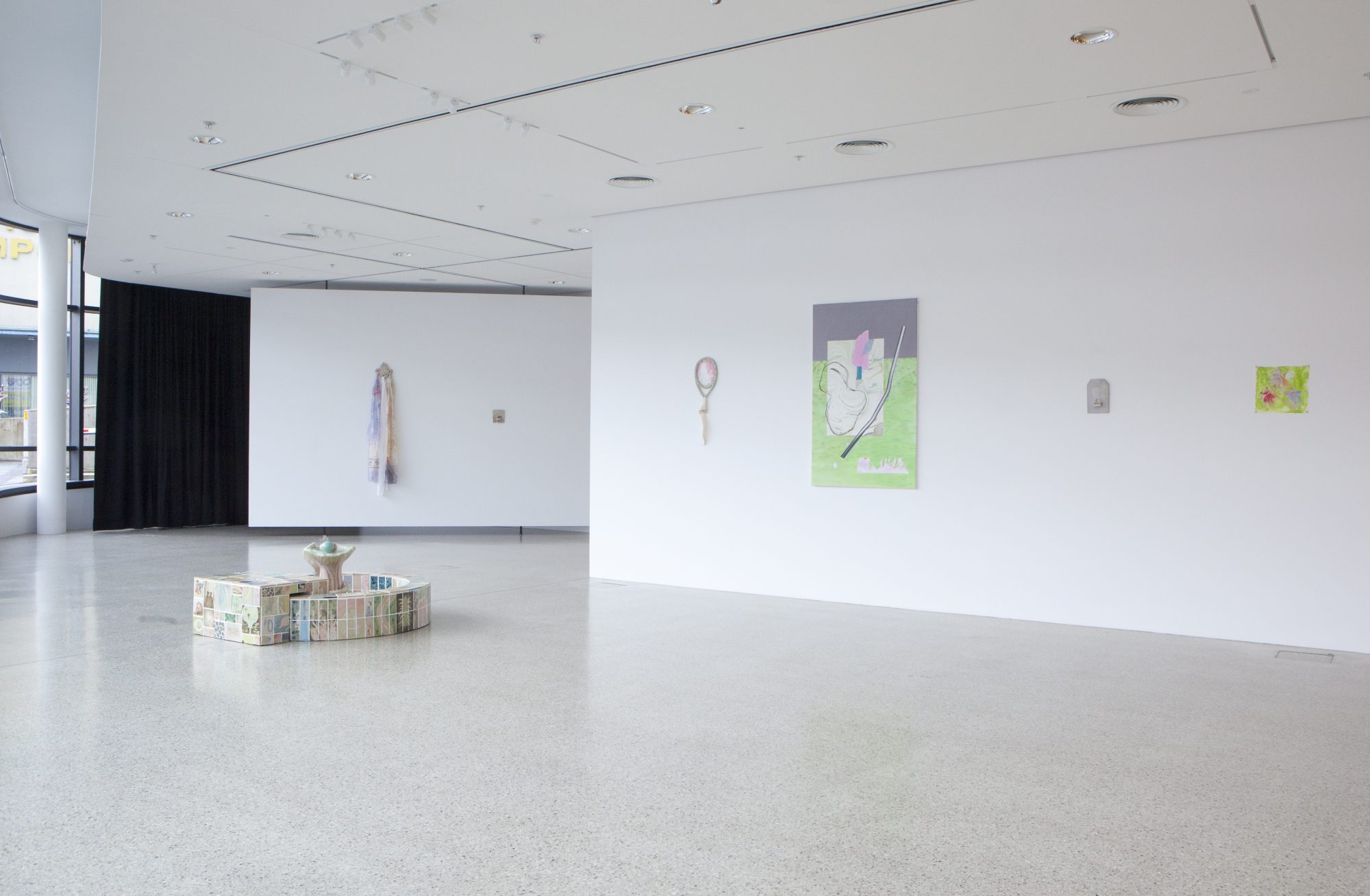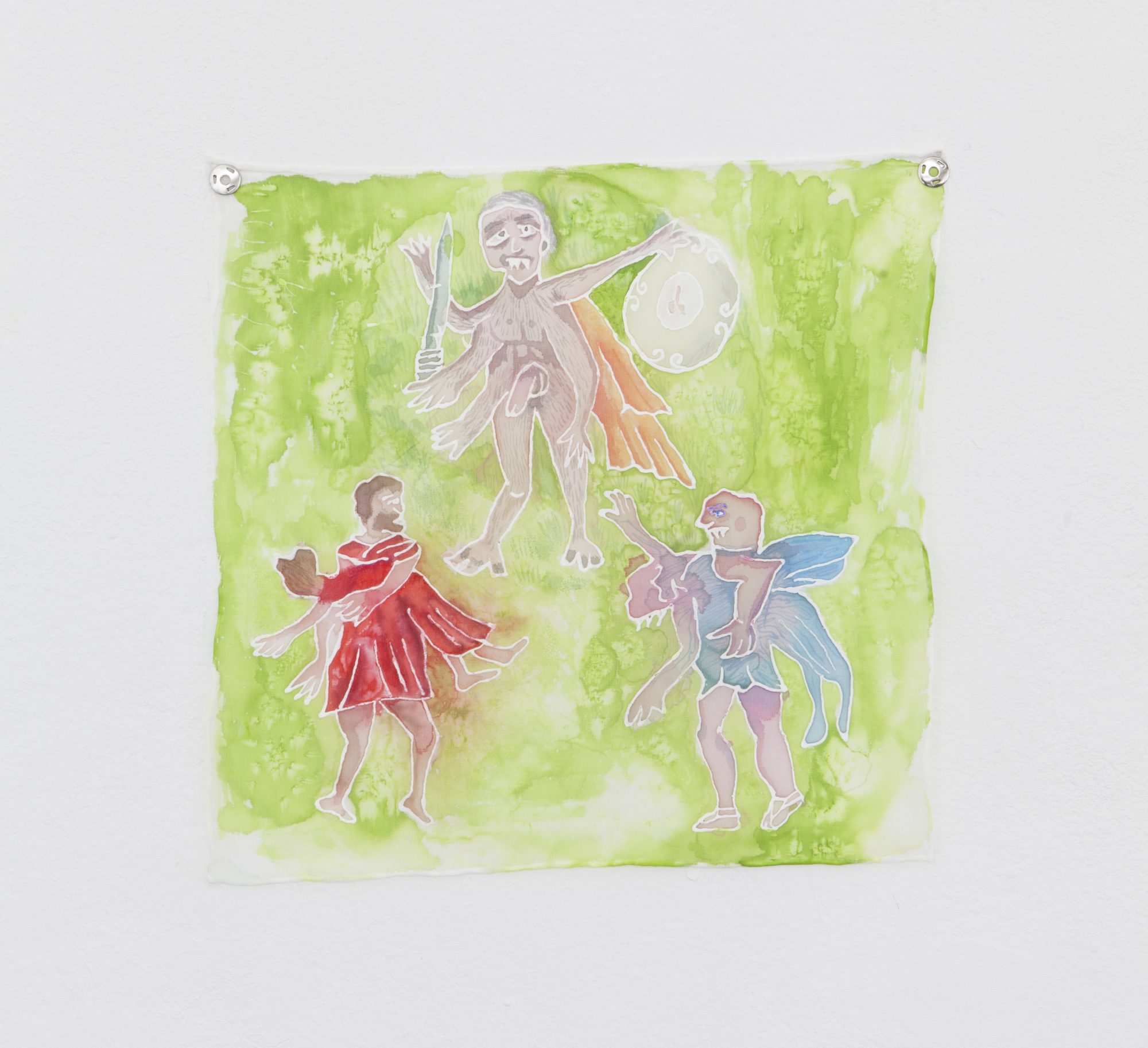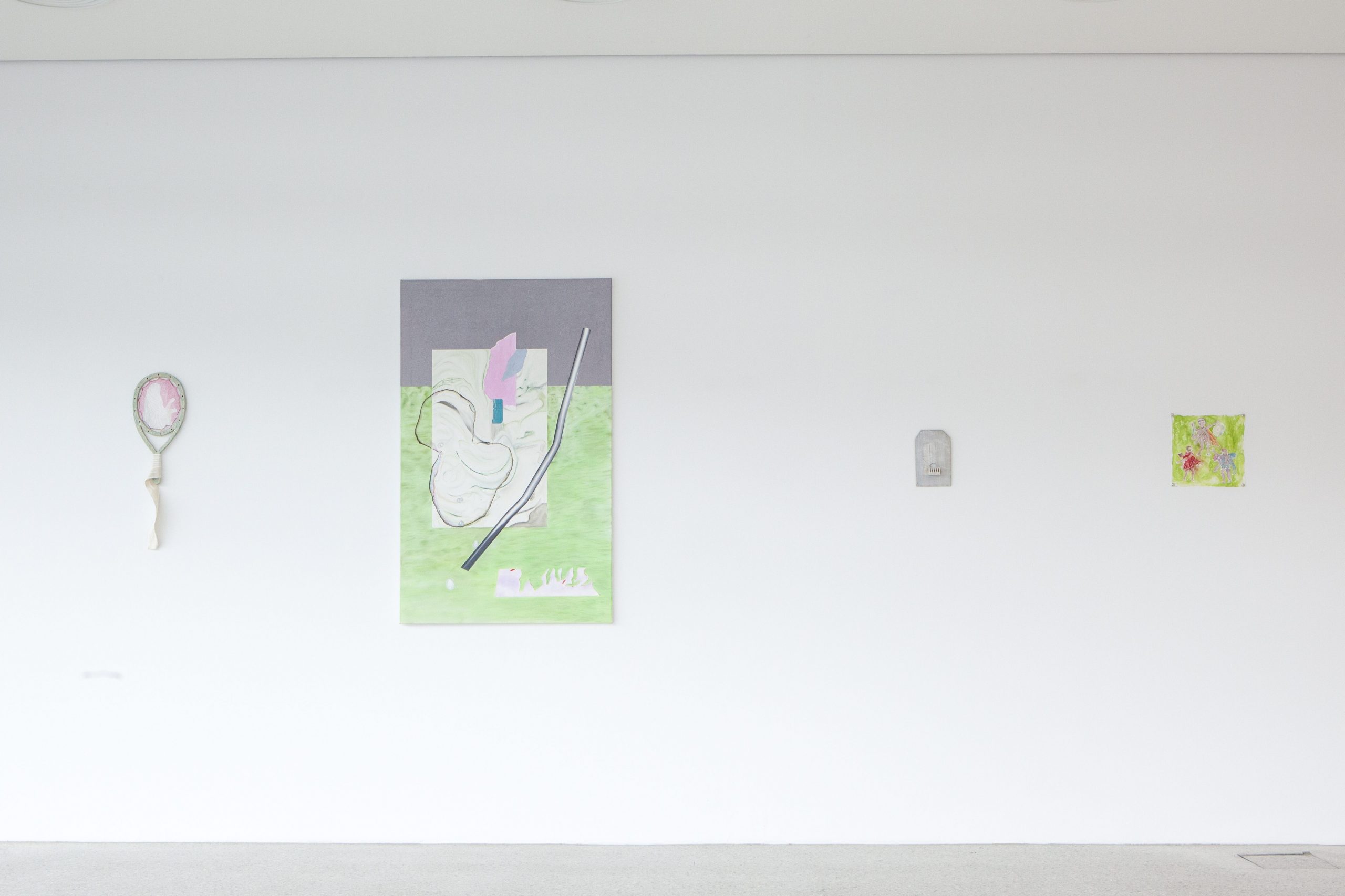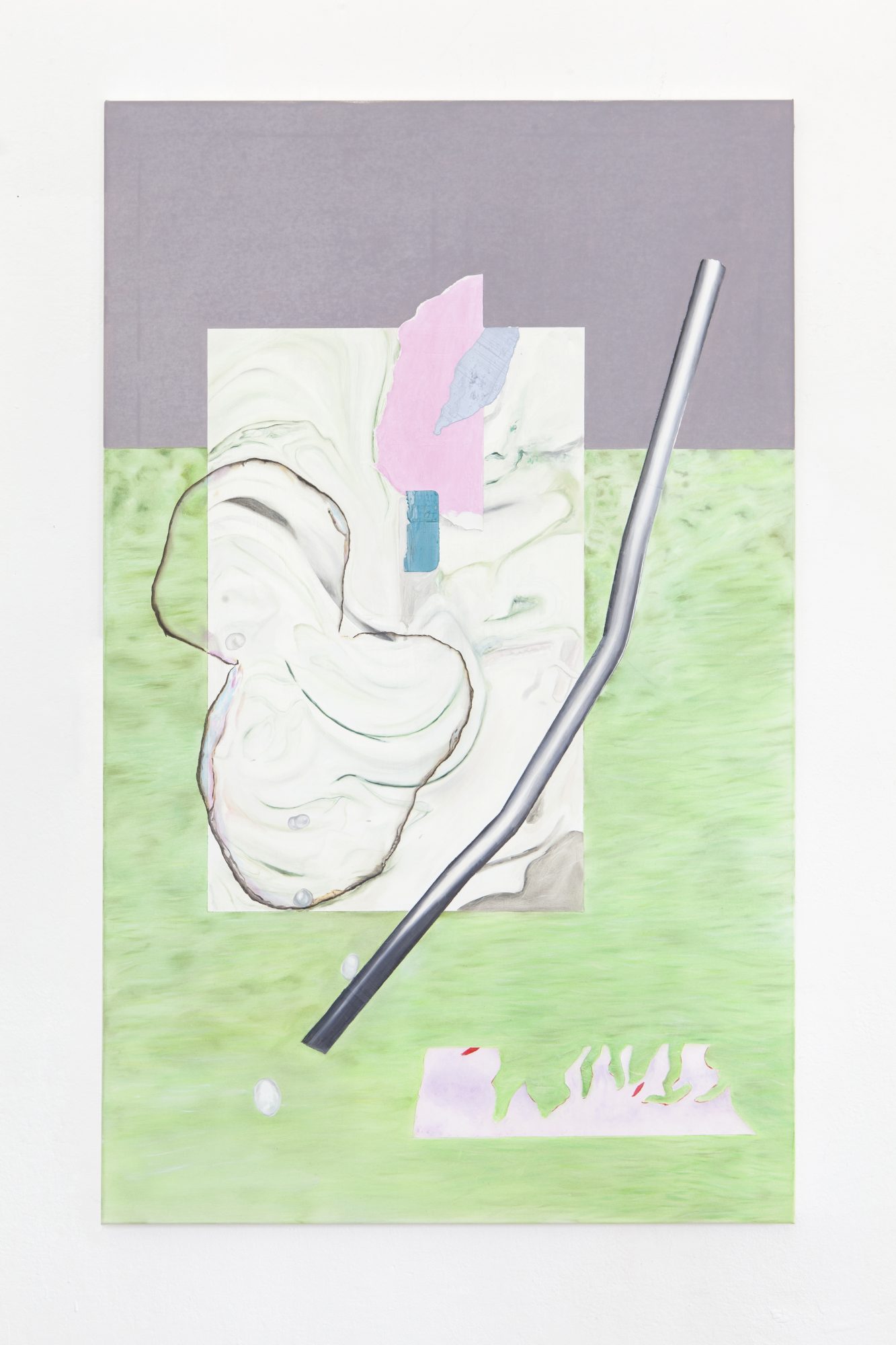Solo Exhibition, Plattform 6020, Innsbruck
09. September – 23. October 2021
Exhibition text: Carlota Mir (Curator)

Installation view, Spa, Plattform 6020
The fountain in Veronika Abigail Beringer’s Spa is a reinterpretation of the remains of the Shrine of Venus Cloacina (Shrine of Venus of the Sewer) in the Roman Forum of the city of Rome. Cloacina was worshipped by the Romans as the goddess of purity or cleanliness. Her name derives from the Latin verb cloare – to clean. According to Pliny, the sanctuary dates from the time Rome was founded, and it is assumed to be connected to the layout of the Cloaca Maxima in Rome. The site is also related to the founding Roman myth ‘The Abduction of the Sabine Women’, in which the men of Rome committed a mass abduction – and, according to some historians, rape – of young women from the other cities in the region. After the dispute ended, and encouraged by the Sabine women – who were now married to the Romans – the Romans and Sabines are said to have laid down their weapons in the Venus Cloacina sanctuary and carried out a purification ceremony.
“The fountain becomes a collective moment for self-reflection and care, making peace, and moving on.”
Through a female gaze, the fountain as metaphor for cleansing, reconciliation, transformation and washing away, and a focus on the ruins that allows the artist to re-imagine an alternative history through object-making, Spa re-enacts the Sabine women’s quest to heal violence through gentle action. The fountain becomes a collective moment for self-reflection and care, making peace, and moving on. Furthermore, through the fountain and the numerous objects that surround it, the artist re-signifies the idea of Venus as a symbol of beauty, sexuality, motherhood and femininity, making its meaning more powerful and complex, but also engulfed in contradiction: how can the Goddess of Beauty also be the Goddess of Sewers? Through the reinterpretation of the Venus Cloacina ruins, the artist manifests a perpetual state of contradiction between violence and healing, darkness and beauty, as fundamental to artistic creation and human nature.
Venus Cloacina (fountain), 2021, underglaze-paint on stoneware, extruded polystyrol, ytong, grout und aromadiffusor, 122 x 150 cm
“The artist re-signifies the idea of Venus as a symbol of beauty, sexuality, motherhood and femininity, making its meaning more powerful and complex, but also engulfed in contradiction: how can the Goddess of Beauty also be the Goddess of Sewers?”
‘The Abduction of the Sabine Women’ has been a frequent subject in the work of cismale artists – such as Giambologna, Rubens, Degas, Poussin or Picasso – who often emphasize the violence of the abduction, sexualizing women, beautifying sexual violence, and turning the myth into a signifier of male power and domination. Retold from a female perspective, a classical myth about male violence and power becomes an opportunity for absolution, cleansing, and starting anew. Through the water fountain as a metaphor for peace and forgiveness, the Sabine women’s gesture is interpreted by the artist as an attempt to wash away the guilt and shame of the Romans for having abducted – and possibly sexually assaulted – them, allowing for violence to cease and for the city to thrive once again, and transcending their own pain and suffering for the greater cause of reconciliation. From the fountain as a symbol of empathy and agency, the washing away of guilt becomes a healing ritual for contemporary violence and endless guilt in an increasingly polarised world of clashing identities, unresolved trauma and oppression.
“Retold from a female perspective, a classical myth about male violence and power becomes an opportunity for absolution, cleansing, and starting anew.”

roman rapists, 2021, silkpaint on silk, 18 x 18 cm
At the same time, the element of water as a purifying and transformative agent is central to the artwork. Because of its power of transformation and its endless ability to transition, water is a recurrent theme in Beringer’s work. In her diploma show Allround Schwimmer, she used water as a metaphor for her intuitive approach to the artistic working process. Understanding the circulation, transitions and appropriations of emotions, materials and themes over time, and their eventual accumulation, decomposition, disappearance, or fading, is a fundamental aspect of her work. The metaphor of water also stands for the impossibility to capture fluidity and as a possibility to fade, or escape, from the norm, slipping into a gentler world.
The element of the ‘spa’ also symbolises the relationship between water and health. Interestingly, the word Spa is a ‘bacronym’ – a fabricated acronym in the contemporary age – of various Latin phrases, such as ‘sanitas per aquam’, meaning ‘healthy through water’. The recurrence of water as a healing medium since Classical times and as an important element of self-care in contemporary culture is here recalled by the artist through the physical presence of the water as a cleansing element that visitors can indulge in. However, in the installation, due to the precarious maintenance conditions of the exhibition space, the fountain appears empty of any water, pointing, perhaps, at the gap between myth making as a lofty, high-status task traditionally attributed to educated cismales, and the contemporary conditions of artistic labour as gendered, precarious labour of love, where self-care becomes a near-impossible task.
Text by Carlota Mir
balcony tile #1, 2021, underglaze-paint on stoneware, sand, plastic-pearl-heart, seashell and Collage, 21,2 x 13,5 cm

Installation View, Spa, Plattform 6020
beyond the racked veil, 2021, underglaze-paint on stoneware, silk paint on silk and acrylic on fabric, 40 x 20 cm

unable to channel the sweeping marsh, 2021, oil on canvas, 130 x 80 cm
venus brooch, 2021, underglaze-paint on stoneware, silk paint on silk and fabric, 150 x 40 cm
balcony tile #2, 2021, underglaze-paint on stoneware, sand, seashell and Collage, 15,3 x 13,6 cm
Venus Cloacina (fountain), 2021, underglaze-paint on stoneware, extruded polystyrol, ytong, grout und aromadiffusor, 122 x 150 cm